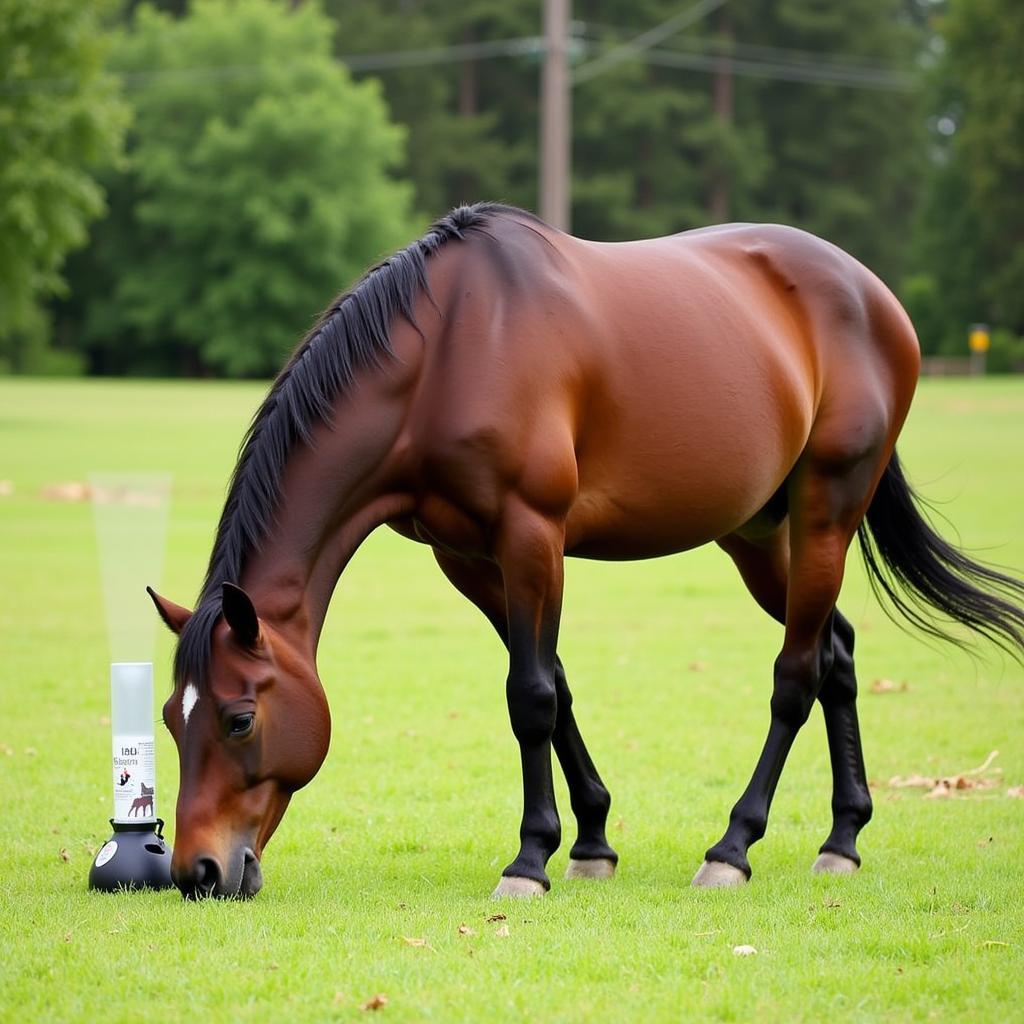Horse Pal Fly Traps are an essential tool for keeping your equine companions comfortable and healthy during fly season. These traps offer a humane and effective way to control fly populations around your barn, pastures, and riding areas, protecting your horses from the annoyance and potential diseases that flies carry. This comprehensive guide will delve into everything you need to know about horse pal fly traps, from how they work to choosing the right one for your needs.
Understanding the Importance of Fly Control for Horses
Flies aren’t just a nuisance; they can pose serious health risks to your horses. They can transmit diseases, cause skin irritations, and lead to infections. Constant swatting and stomping from fly bites can also stress your horses, impacting their performance and overall well-being. Using a horse pal fly trap is a proactive step in protecting your horses from these problems. These traps work by attracting flies with a combination of scent and visual cues, then trapping them on a sticky surface or in a container where they dehydrate and die. This method helps to significantly reduce the fly population in the surrounding area.
Choosing the Right Horse Pal Fly Trap: A Comprehensive Guide
Selecting the right horse pal fly trap can feel overwhelming with so many options available. Consider the size of the area you need to protect, the types of flies prevalent in your region, and your budget. Some traps are designed for smaller areas like stalls or paddocks, while others are more suited for larger pastures. feed thru fly control for horses can also be a great supplementary solution for overall fly management.
Types of Horse Pal Fly Traps: Exploring the Options
Various types of horse pal fly traps are available, each with its own advantages. Sticky traps use a sticky surface to capture flies, while bag traps lure flies into a container from which they cannot escape. Some traps utilize UV light to attract flies, making them particularly effective at night. Understanding the differences between these types will help you make an informed decision.
Setting Up and Maintaining Your Horse Pal Fly Trap
Proper placement and maintenance are crucial for maximizing the effectiveness of your horse pal fly trap. Position the trap in a sunny, open area where flies are most active, away from areas where horses are fed or watered. Regularly empty or replace the trap as needed, depending on the type you choose. This ensures the trap continues to attract and capture flies efficiently. Learning some basic horse terms for beginners can help you better understand the needs of your horse and their environment.
Tips for Optimal Placement and Care: Maximizing Trap Effectiveness
To get the most out of your horse pal fly trap, consider these additional tips. Place the trap downwind from your barn or stable to catch flies as they are carried by the breeze. Avoid placing the trap too close to areas where horses congregate to minimize the chances of them accidentally coming into contact with it. Regular cleaning and maintenance will also prolong the life of your trap.
Why Invest in a Horse Pal Fly Trap?
Investing in a horse pal fly trap is an investment in the health and comfort of your horses. By reducing the fly population, you’re minimizing the risk of disease transmission and irritation. This contributes to a happier, healthier horse and a more enjoyable riding experience.
“A good fly control program is essential for any horse owner,” says Dr. Emily Carter, DVM. “Horse pal fly traps are a valuable tool in that program, providing a safe and effective way to manage fly populations and protect your horses.”
 A healthy, happy horse grazing in a pasture with a horse pal fly trap in the background.
A healthy, happy horse grazing in a pasture with a horse pal fly trap in the background.
Conclusion: Ensuring a Fly-Free Summer for Your Equine Friends
Horse pal fly traps are a crucial component of any comprehensive fly control strategy for horse owners. By understanding the different types of traps available, choosing the right one for your needs, and implementing proper placement and maintenance practices, you can effectively reduce fly populations and protect your horses from the nuisance and potential health risks associated with these pests. Investing in a horse pal fly trap ensures a comfortable and healthy summer for your equine companions.
FAQ
- How often should I replace my horse pal fly trap?
- What is the best location for a horse pal fly trap?
- Are horse pal fly traps safe for other animals?
- Can I use a horse pal fly trap indoors?
- What type of attractant should I use in my horse pal fly trap?
- Are there any natural alternatives to horse pal fly traps?
- How effective are horse pal fly traps in controlling western horse fly?
Need further assistance? Contact us at Phone Number: 0772127271, Email: [email protected] or visit us at QGM2+WX2, Vị Trung, Vị Thuỷ, Hậu Giang, Việt Nam. We have a 24/7 customer service team.